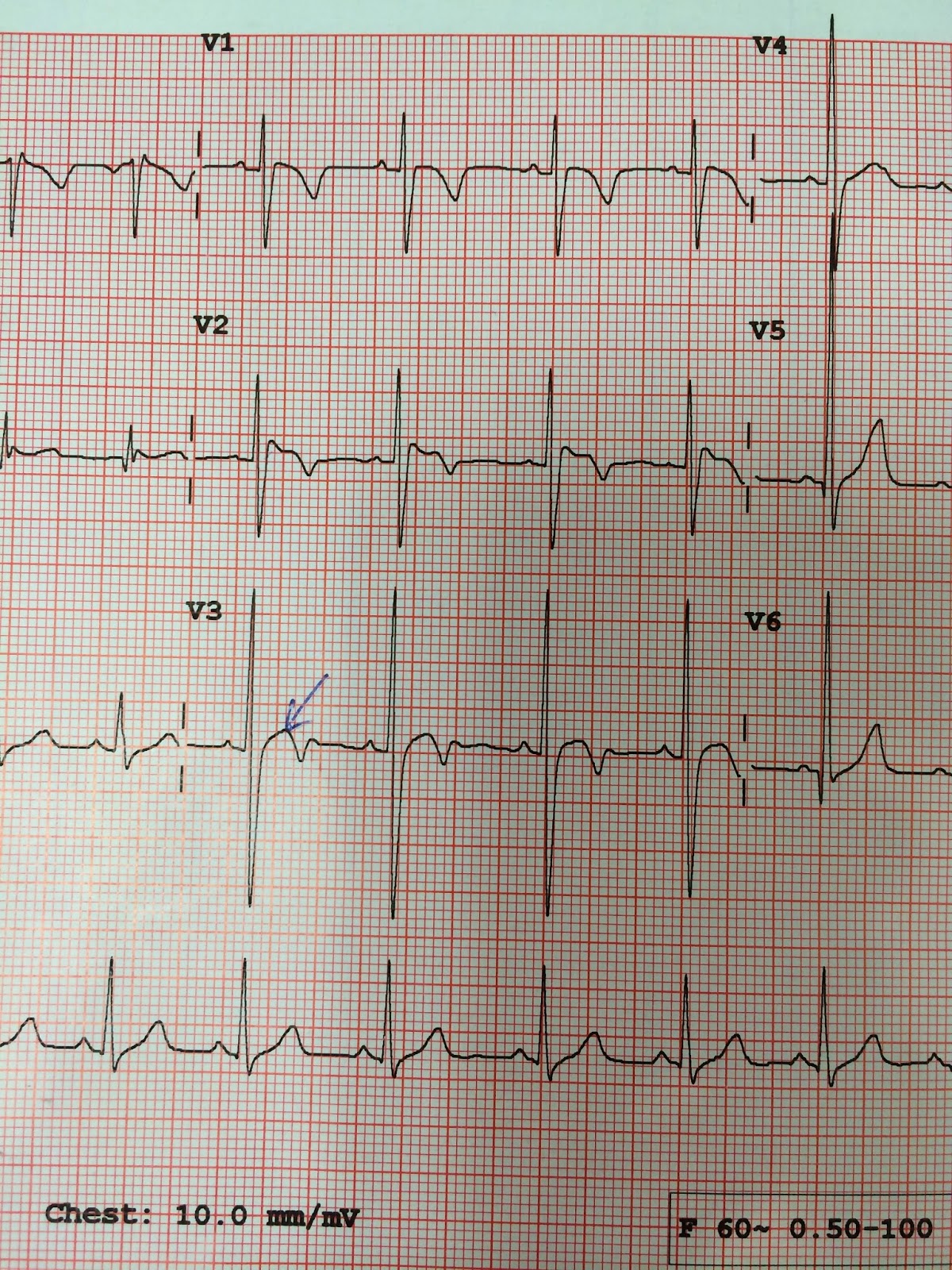 |
| This post was peer reviewed. Click to learn more. |
Author: Kristin E. Fontes, MD
Academic Fellow/Clinical Instructor, Division of Emergency Medicine
Stanford University
Case
A 6 year old boy is sent to the ED by his outpatient cardiologist for fever. He has a history of an abnormal pattern on EKG when he has a fever. He has an implantable loop recorder. Below is a portion of his EKG obtained on arrival to the ED. His temperature was 101.2. What is the diagnosis?
The patient’s EKG shows a Brugada pattern. Here (cited below) is a small study that looked at 47 patients who presented with Brugada-type EKGs and identified potential inducers. Some patients had the common SCN5A mutation, while some did not. Patients may be asymptomatic or have syncope/sudden cardiac death whether or not they have the mutation.
Reported Brugada-type EKG inducers
- Fever
- Drugs with sodium channel blockade properties (cocaine, TCAs, antidysrrhythmics, anesthetics)
- Propofol
Management priorities in the emergency department
The most important aspects of treatment are stabilization of malignant arrhythmias as well as fever control and/or removal of the offending agent, if applicable. Cardiology consultation is warranted for consideration of genetic testing, electrophysiologic studies, and potential ICD placement.
References
Junttila MJ, Gonzalez M, Lizotte E, et al. Induced Brugada-type electrocardiogram, a sign for imminent malignant arrhythmias. Circulation. 2008;117(14):1890-3.
Allely, Peter. What is Brugada Syndrome?. Life in the Fastlane Blog, http://lifeinthefastlane.com. http://lifeinthefastlane.com/what-is-brugada-syndrome/. Accessed January 12, 2015.

